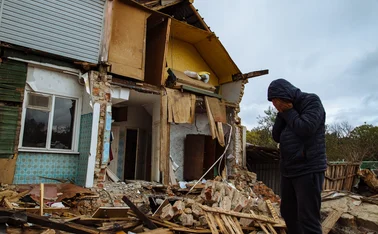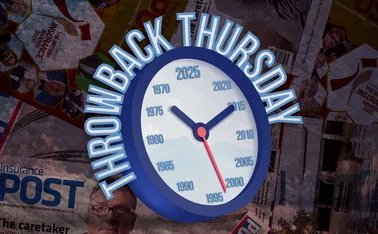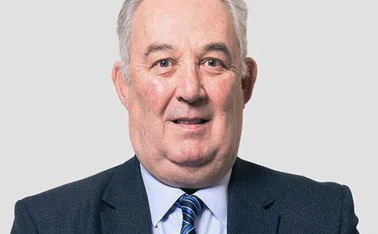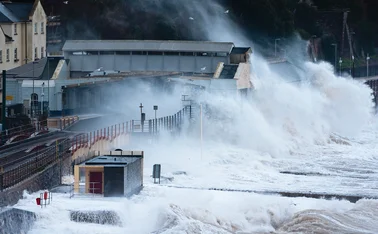
Intelligence: 11 September 2001 - 20 years on

With this week marking the 20th anniversary of the terrorist attacks in New York and Washington on 11 September 2001, Post looks back to see how the insurance market handled the claims and how terrorism cover has adapted since then.
At this time of the 20 year anniversary, memories of 11 September 2001 are being reawakened with a swathe of media coverage and numerous TV programmes – these included being inside President George Bush’s war room, interviews with survivors who by chance avoided being in the twin towers as well as stories of those who were lost and are still very much missed.
Insurers were able to play a key part in the recovery process, even if the damage done will never be fully healed and some insurers dragged their feet when it came to paying claims.
But, insurers that provided cover have left a legacy, not least in helping fund the development of One World Trade Center, which opened in 2014, and was built on part of the damaged site and is the tallest building in the US.
So what has been learnt from how the sector responded and how has the insurance market changed since those unforgettable terrorist attacks?
9/11 claims settlements – why did they take so long?
The insurance claims took years to be settled, involved vast sums and many lawsuits. Overall, around $40bn (£28.9bn) was paid out, including some $5bn paid to parties connected to the World Trade Center. These included American businessman Larry Silverstein who led much of the litigation and had taken out a 99-year lease on the World Trade Center in July 2001 for $3.2bn.
In August 2018, it was reported that final litigation relating to liability over the attacks was concluded. The case, which was heard in a Manhattan court, involved developer World Trade Center Properties, seeking a $14mn payment from insurer QBE.
It believed this should be paid from a settlement already made to aviation companies of $1.2bn – these include American Airlines and United, which had owned the hijacked planes. The developer also sued the airlines and achieved a $95m settlement since it successfully claimed lax security measures allowed the planes to be taken by force. But, the claim against QBE in isolation remained unresolved and the judge found that the developer’s insurance did not allow it to receive this further payment and the case ended in the insurer’s favour.
Whenever courts are involved, claims will typically take years to settle. Also the insurance industry was not always clear on the correct route to follow. This was a disaster on a new level and involved many different classes of business - such as property damage, high net worth, aviation and liability – that were all triggered at once.
As Steve Coates, chief underwriting officer with Pool Re, says, the scale of damage was unprecedented. “While Lloyd’s and other markets settled many claims promptly, claims involved many insurers and some large policies ultimately were judged by the courts not to reflect the intention of one or more parties. The complex and protracted litigation in the US courts took a decade to resolve.”
David Heeney, underwriter for The Fiducia MGA, adds: “Claims took so long to settle because they went to court, including a few times on appeal, to decide whether the attacks were a single event or two events. The outcome was that it really depended on the wordings used with the courts deciding that the attacks had been one event - under wordings used by the major insurers - and two events under other wordings.”
This matter, for example, only reached a conclusion in 2013 through a case in the UK high court (Aioi Nissay Dowa Insurance Company Limited v Heraldglen). This found the attacks did constitute two events for the purposes of aggregation under an excess of loss reinsurance wording. Each tower was described as a single building, even if they were joined by a single mall and they did not fall together. It was said that if only one tower had fallen, the other could have survived – it was only that both hijackings hit their separate targets.
Impact on the insurance market
The market has been largely shaped by what happened on 9/11 and as Coates explains, it emphasised the need for contract certainty. “Then, there was uncertainty as to what coverage included. A terrorist attack was seen as a remote possibility and so its wide-ranging effect on both policyholders and insurance classes was not anticipated.”
He continues: “There’s now a defined market for terrorism cover – wordings are much clearer. The arrival of contract certainty has led to a more effective sector for brokers and their clients, with policies produced far more quickly.
“Look back 20 years and some policies could take two years to issue. At the time, 9/11 triggered both a significant hardening of terms as well as a restriction in capacity across many classes of insurance.”
While the UK already had Pool Re, in the US, the government passed the Terrorism Insurance Act in 2002 – a government-backed facility for American insurers that offer terrorism coverage – similar to Pool Re. As Feeney explains: “TRIA has certain triggers and for example, the attack needs to be certified by the US government as an act of terrorism. As in the UK, there are standalone terrorism covers available as an alternative to TRIA. Standalone terrorism coverage tends to provide wider coverage in terms of the definition of an Act of Terrorism and lone-wolf attacks, rather than groups, and the Lloyd’s market offers standalone terrorism cover for US-based risks.”
The UK has been and remains a leading force within the terrorism insurance market – and has many highly experienced underwriters and brokers, particularly working within Lloyd’s.
Notably, Pool Re was established before 9/11 – having been set up in 1993 following the Irish Republican Army’s bombing campaigns. In the US, however, many policies did not explicitly exclude terrorism, hence why such large losses occurred. Subsequently, a global standalone market for the product has evolved and recent years have seen policies adapt to meet changing risks.
New features within terrorism policies
Sarah Joiner, terrorism underwriting manager for managing general agent Burns & Wilcox, comments: “The biggest change to terrorism cover in recent years has been the introduction of non-damage denial of access and loss of attraction covers. Traditionally, terrorism policies were designed to cover material damage and subsequent business interruption. For a policy to respond to a financial loss claim, there needed to be physical loss or damage to the property insured.
“Businesses near where an attack took place found themselves financially impacted but unable to benefit from their terrorism insurance, as they did not incur any physical damage. This meant that many businesses impacted by 9/11, and other terrorist attacks, but not directly suffering material damage, were unable to receive support from their insurance.”
According to Joanna Hitchcock, head of war and terrorism for Liberty Specialty Markets: “As the nature of the threat changes and businesses are impacted in different ways, so the terrorism and political violence market is evolving. Born in the aftermath of the attack on New York’s Twin Towers in 2001, what began as protection for physical damage to property caused by terrorist attacks has grown rapidly over the years, as the nature of the threat has evolved and weaknesses or coverage gaps have been exposed.
“Active assailant insurance, for example, was introduced in response to the school shootings in the US and was designed to close a gap in general liability policies that neither specifically included or excluded such attacks. Non-physical damage business interruption cover likewise was pioneered in response to the recent shift in focus from attacks on property to attacks on people.”
Policies are also likely to include chemical, biological, radiological and nuclear materials or weapons cover - the UK Integrated Review stated it is likely that a terrorist group will launch a successful CBRN attack by 2030. According to Coates: “Issues such as germ warfare are being considered more – could a terrorist access a virus or other biological pathogen? Given recent experience, it’s not implausible. Pool Re has covered CBRN since 2003 and since 2018, cyber cover in addition to non-damage business interruption insurance.”
And as Coates adds: “There’s now greater understanding of the dynamic nature of terrorism risk. There has been extensive modelling work, far more intelligence and knowledge.”
He says that Pool Re has also used its experience to work in other countries to help them develop capabilities. “Apart from South Africa, prior to 2001, there were no other designated terrorism pools. Post 2001, when terrorism became a blanket exclusion in the property market, Pool Re has been able to use its underwriting and claims experience to foster capacity development as governments and the (re)insurance company market sought to fill the gap.”
What is the appetite for terrorism insurance?
The pandemic put a stop to events, crowded public transport and the occupation of landmark office buildings, which are typical targets for terrorists.
However, the events sector has restarted and more are returning to workplaces. The question is whether business will choose to buy cover, given that they may be financially stretched.
As Joiner says, there has been a drop in appetite for cover in the last 18 months and this is connected both to the pandemic as “many businesses declined to purchase terrorism cover as they felt there was little or no threat to their business”.
She adds: “Second, businesses that survived the pandemic are being hit with large increases in their commercial combined premiums. Because of this, some are choosing not to take out terrorism cover as a way of easing the financial impact.”
Yet according to Feeney, there remains an appetite from Lloyd’s syndicates to write terrorism risks in the US and UK. “No event in the US since 9/11 has been declared an act of terrorism, in terms of i triggering. Whether the appetite will remain following the recent events in Afghanistan and the potential for the re-emergence of radical groups being able to carry out an attack on US soil, though, remains to be seen.”
The market has also seen a new entrant in the shape of Mosaic, the Bermuda-based insurer, which has offices in London and New York. It is offering a range of standalone terrorism products that can be written as primary, excess or quota-share coverage to mitigate damage, business disruption costs, or lost sales revenues in the event of attacks or threats.
How do insurers see the terrorist threat today?
Pool Re has already commented on the increased risks as hospitality and retail reopen after the pandemic. Meanwhile, Joiner points out there is new legislation being debated that the UK government are looking to implement called ‘Protect Duty.’
She explains this will impose greater responsibilities on business owners and operators in the retail and hospitality sector. “It will require them to do more to understand and mitigate the threat of terrorism to their businesses, particularly those which operate in publicly accessible spaces such as outdoor seating in bars and restaurants, which has risen dramatically following Covid-19 as many businesses sought to maximise their trading ability.”
She believes it may also be an opportunity for the insurance industry to become involved and offer guidance to businesses to better prepare themselves.
Insurers and brokers also continue to promote terrorism cover to the SME sector, pointing out that even while they may not be the targets of an attack, that businesses can still experience extreme disruption if they are in the vicinity.
There may also be new threats on the horizon – Chris Phillips, the former head of the national counter-terrorism security office, has said the situation in Afghanistan may inspire some in the UK to launch attacks.
Speaking of the Taliban takeover, he claimed: “We have got thousands of people in the UK at the moment that see this as a victory and may well decide to start attacking us from within.”
Or, perhaps the ‘Incel’ subculture may be viewed as increasingly dangerous and as risk managers’ body Airmic pointed out, lone actors have become the main perpetrators of attacks over organised terrorist groups.
Yet, in these uncertain times, many businesses, may be weighing up if they are able to meet the additional cost of terrorism insurance. Plenty of us will recently have been reminded of the day those four passenger planes were hijacked and used as deadly weapons. It also meant that for those who believe cover is necessary, a market exists to provide insurance that should reflect the risk and offer protection that is fit for purpose.
Colleagues remembered
It has been 20 years since that day. Of nearly 3,000 people who were killed in the terrorist attacks, 16 were members of Risk Waters, and another 71 were delegates who had arrived to catch the morning presentations or settle in before participating in panel discussions scheduled for later in the day. Another 72 restaurant staff were already well into their shifts, having arrived early for breakfast preparations.
As a public tribute to those colleagues, a series of articles has been published on the Risk.net and Waters Technology sites. They are not paywalled, and we encourage everyone to read them.
Anchoring the series is an article by Anthony Malakian, editor-in-chief of Waters Technology, based on interviews with former colleagues – it records for the first time the impact that 9/11 had on our company, and the people who worked here at the time.
Read a contribution from Celine Connell, former publishing director, board director, Risk Waters
Read a contribution from Tony Gibson, former publishing director, board director, Risk Waters
Read a contribution from Nat Knight, former regional director, Americas, Risk Waters
Read a contribution from Peter Field, former Risk Waters Group chief executive
Further reading
Only users who have a paid subscription or are part of a corporate subscription are able to print or copy content.
To access these options, along with all other subscription benefits, please contact info@postonline.co.uk or view our subscription options here: https://subscriptions.postonline.co.uk/subscribe
You are currently unable to print this content. Please contact info@postonline.co.uk to find out more.
You are currently unable to copy this content. Please contact info@postonline.co.uk to find out more.
Copyright Infopro Digital Limited. All rights reserved.
As outlined in our terms and conditions, https://www.infopro-digital.com/terms-and-conditions/subscriptions/ (point 2.4), printing is limited to a single copy.
If you would like to purchase additional rights please email info@postonline.co.uk
Copyright Infopro Digital Limited. All rights reserved.
You may share this content using our article tools. As outlined in our terms and conditions, https://www.infopro-digital.com/terms-and-conditions/subscriptions/ (clause 2.4), an Authorised User may only make one copy of the materials for their own personal use. You must also comply with the restrictions in clause 2.5.
If you would like to purchase additional rights please email info@postonline.co.uk








